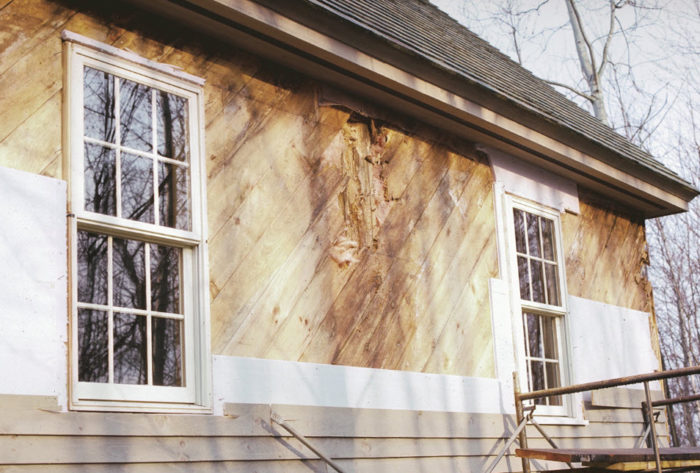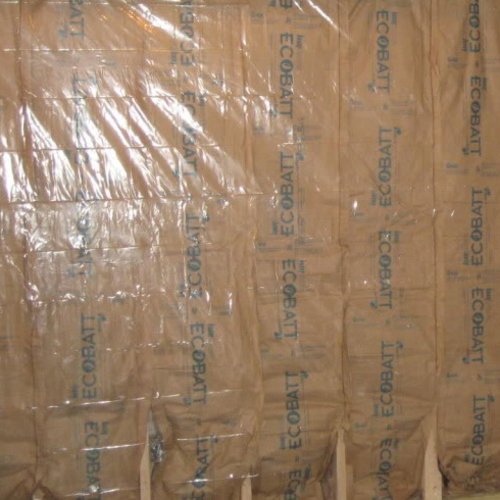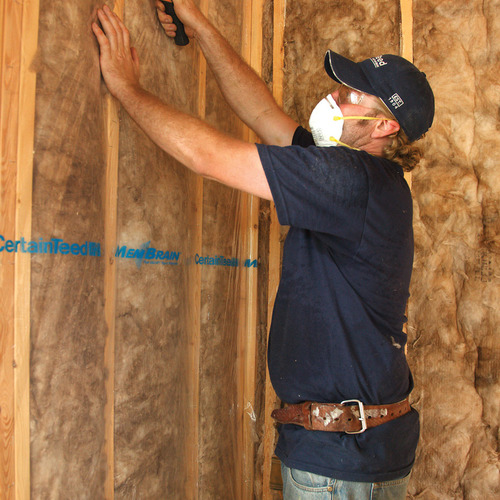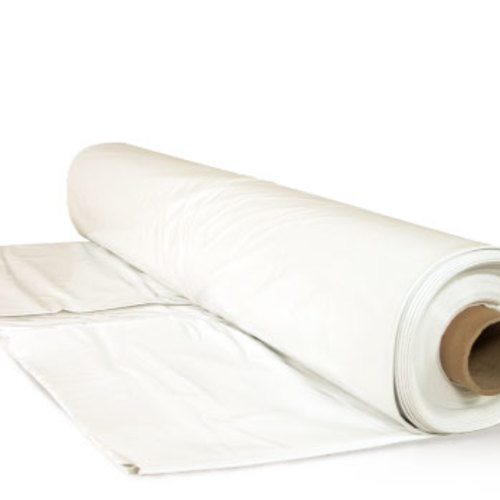
Image Credit: Fine Homebuilding magazine
Few topics in building science seem to have caused as much confusion as the use of a polyethylene vapor barrier in exterior walls.
Once routinely used by builders to prevent the migration of interior moisture into wall cavities, polyethylene is no longer recommended for houses unless they’re built in extremely cold climates.
But related questions keep coming, including this query from Ed in Chicago, which was posted in the Q&A forum at GreenBuildingAdvisor: “It’s well known that improper use of vapor retarders can prevent walls from drying out properly and leading to moisture related issues such as mold and rot,” Ed writes. “Is it uncommon to have moisture issues in walls due to air leaks or vapor diffusion if the vapor retarder is left out? Would there be a concern with moisture issues for a standard construction wall (siding, plywood sheathing, 2×4 or 2×6 framing, fiberglass or cellulose insulation, drywall without vapor retarding paint) if the vapor barrier is not used in cold climates?”
The house under construction (not Ed’s, but the house of someone he knows) won’t include a poly vapor barrier — but the builder doesn’t plan any special effort to make it airtight, either.
“It seems like every story I hear about wall moisture problems is because of improper use of vapor barriers, not because it was left out,” Ed wrote. “Is there concern that leaving out the vapor barrier without making the house reasonably airtight lead to a moisture problem?”
That’s the subject of this month’s Q&A Spotlight.
Don’t forget, vapor barriers had a purpose
Malcolm Taylor reminds Ed that problems associated with the movement of interior moisture is what prompted builders to begin using vapor barriers some 40 years ago, and that walls built in the…
Weekly Newsletter
Get building science and energy efficiency advice, plus special offers, in your inbox.

This article is only available to GBA Prime Members
Sign up for a free trial and get instant access to this article as well as GBA’s complete library of premium articles and construction details.
Start Free TrialAlready a member? Log in















6 Comments
Sealing electrical penetrations in ext walls with no poly
This may be off topic but when there is no poly air barrier, how do you seal electrical penetrations in exterior walls and ceilings?
Use polypans or boxes with a flange
Assuming you are asking about new construction, the electrical boxes can be put in polypans, such as by Lessco, or the boxes themselves can have the flanges, such as those by Airfoil. In the case of polypans, the openings in the pan through which the wires pass are sealed with can foam before the drywall goes on. In the case of the Airfoil boxes, these have small compartments on either end, through which the wires pass into the inner box for connections, and these compartments are partially foamed, also before drywall. The drywall is sealed to the flanges, with gaskets or sealant.
Condensation
Put simply condensation doesn't form on warm wood!
Wood that is warm relative to a rooms ambiance.
Keeping a frame above dew point ensures it stays dry!
Ensuring the frame is isolated from the cold outside achieves this target.
Enclosing the frame in enough insulation achieves this target, albeit at the ongoing cost of keeping the frame and the spaces between the frame above dew point.
If we take an average room temperature of 70F and an average room relative humidity of 65% we need to keep the frame above 57F to avoid condensation.
As humidity in the home is created by people, mainly by cooking, washing, breathing and sweating then having cold windows to collect the condensation or fitting and using exhaust fans in the kitchen and bathroom will push excess water vapor outside when/if the outside temperature and humidity are lower. A humidistat controlled constantly on dehumidifier is more reliable.
On the other hand, having the insulation on the room side of the frame saves the cost of maintaining the frame temperature above dew point, with the water vapor control on the room side of the insulation, means the vapor control is easily maintained at room temperature and there is no possibility of condensation forming on the vapor barrier or seeking to pass through it, as the insulated miniscule space behind the vapor barrier is also above dew point.
Placing the insulation on the room side of the frame uses less insulation.
Easy but expensive fix
To solve all the above problems, (convection and radiation air moisture condensation, air movement, proper "R" values, thermal breaking) simply install 2lb closed cell spray foam in your wall cavities. Truth is, no matter how much your insulation "R" value is, if the out side air dew point is 74 degrees, dry bulb is 92, and your air conditioned space inside your home is 70 degrees that poly vapor barrier will begin to condense moisture that penetrates the exterior sheathing. Spray foam solves all these issues. If you are too cheap for it, and your not in the Yukon or Alaska, use Kraft faced insulation bats.
That magic border
"“Malcolm's advice is appropriate for many locations in Canada, but is not recommended in the U.S."
Since 80% of Canada's home-occupying population lives within 200 miles of the US border, what magic effect does this border have that makes building standards different? Having grown up in Canada and now lived in Maine for many years, I see the results of "US-style" building methods daily. Mostly, that's poorly insulated and designed homes (not to mention atrocious roads). I never look at a roofline without imagining six feet of snow on it. Valleys? Leaks. Skyights? Leaks - OK, not 100% of the time - maybe only 80% of the time. Sooner or later...
What percentage of the USA sees significant winter snowfall? I would say at least 50% geographically and perhaps higher by population. So "Canadian" conditions prevail in much of the country, yet are dismissed as irrelevant? By Canadian I mean more need for heating than cooling (therefore driving moisture into wall cavities) and potential for significant snowfall (which does bad things to poorly insulated roofs).
I have a good friend who is a consulting civil engineer in Maine. About half his work is for very well-off clients who have had "dream homes" built in the state, which then (often within the first year) deteriorate to the point they cannot be lived in.
Obviously, conditions vary widely across the USA. Maine has few earthquakes, termite infestations or sinkholes, but suffers extreme cold, humidity, hurricanes, driven salt water, snowfall and other conditions that should be accommodated in any design or build.
Dismissing an interior vapor barrier as only relevant in Canada simply perpetuates the mindset that causes these problems. Yes, you can build your Tucson ranch on the Maine coast (and some builder will be happy to take your check) - but don't expect it to last very long.
Response to Steve P
Steve,
Of course, my reference to "many locations in Canada" was not very specific. But it was true. It should be clear from context that I was referring to the colder regions of Canada. You are correct that these are not the areas where most of the Canadian population lives.
I live in northern Vermont, at 1800 feet of elevation, and older heating degree day charts put this area at somewhere between 8000 and 9000 HDD. (I suspect that climate change has already changed that number.) So I live somewhere that is colder than areas where millions of Canadians live. You are correct that there is nothing magic about crossing the border.
I live in a house with interior poly, and it hasn't failed yet. But I wouldn't use any interior poly if I were building the house again today.
We can all learn from Canadian builders. But more and more houses near the Canadian border -- on both sides of the border -- are air conditioned. It's time to move away from interior poly, unless you live in the prairie provinces, central or northern Quebec or Ontario, the Yukon, or Alaska.
Log in or become a member to post a comment.
Sign up Log in